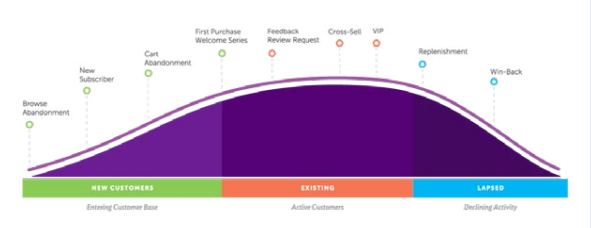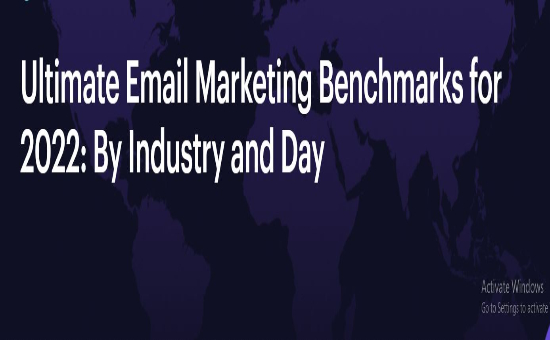The Entrepreneur’s Guide to Email Marketing | Oberlo
Email Marketing
Your Email Marketing Strategy Blueprint
The notion that email has become an obsolete method of communication might have crossed your mind, leading you to wonder, “Is email marketing still effective? Is it worth my time?” The answer is a resounding yes.
Research consistently proves that a well-crafted email marketing strategy can deliver outstanding returns on investment. For instance, DMA’s findings reveal that businesses can earn approximately USD 42 for every $1 spent on email marketing. Similarly, an eMarketer study highlighted an email marketing ROI of 122%, over four times higher than competing channels such as social media, direct mail, and paid search.
Kurt Elster, a Shopify Plus Partner and the host of The Unofficial Shopify Podcast asserts that email marketing is not just beneficial—it’s indispensable.
What Is Email Marketing? A Definition
In your quest to understand what email marketing entails, you’ll encounter various definitions due to its encompassing nature, covering a range of concepts and practices.
At its core, email marketing is a facet of internet marketing (also known as digital marketing) where a business leverages email to:
– Promote its products and/or services.
– Advertise and/or directly sell items.
– Cultivate and maintain relationships with potential or current customers.
You could liken email marketing to the direct mail of the digital age. Rather than relying on paper and traditional postal services to reach a physical mailbox, email marketing enables direct communication to a recipient’s email inbox.
Advantages of a Tailored Email Marketing Strategy
By developing an email marketing strategy finely tuned to your specific industry and target audience, you stand to gain considerable advantages.

The benefits of email marketing include:
Affordability. Email marketing campaigns are significantly less expensive than other marketing methods such as paid advertising.
Extensive and Focused Reach. Email marketing allows you to effortlessly connect with a vast number of quality leads at the click of the “Send” button, thanks to its simplicity and effectiveness.
Increased Engagement. Sending emails to subscribers who have willingly joined your list means your communications reach individuals genuinely interested in your brand, enhancing the quality of engagement.
Boosted Sales, Conversion Rates, and ROI. With recipients already showing interest in your brand and receiving personalized content and offers, there’s a higher likelihood of them making a purchase.
Simplicity in Execution. Numerous tools and platforms are available to facilitate the creation, development, and launch of an email marketing campaign, eliminating the need for coding knowledge.
Seamless Integration. Integrating your email marketing efforts with other initiatives, such as social media and content marketing, is straightforward and requires just a few additional steps.
Trackable Results. With the right tracking and analytics tools, assessing the performance of each email becomes simple, and many email marketing tools come equipped with these features.
Straightforward ROI Calculation. Knowing your key performance indicators (KPIs) and investment in each segment of your email marketing strategy makes it easy to link tactics to their revenue outcomes.
How Do Email Marketing Campaigns Work?

Typically, five fundamental components form the backbone of successful email marketing strategies:
1. Establishing clear objectives and specifics for each email and campaign before their creation.
2. Conducting tests on your completed emails to ensure they appear as expected.
3. Distributing emails to your subscriber list.
4. Evaluating performance by utilizing the email marketing Key Performance Indicators (KPIs) outlined in Chapter 2.
5. Reviewing and analyzing outcomes to identify strengths, weaknesses, and opportunities for enhancement.
Phases of an Email Marketing Campaign
I prefer to categorize the stages of an email marketing campaign into three principal categories: emails tailored for potential customers, first-time purchasers, and loyal, recurring clients. Should a first-time or repeat buyer refrain from engaging or purchasing over a period, they fall into the ‘lapsed’ category, also known as idle or dormant.
Below is a diagram depicting the specific types of emails that can be dispatched according to the customer’s level of activity:

We’ll briefly cover each segment here and then delve deeper into these categories and email marketing strategies in Chapter 3, offering a wealth of examples and tips to help you craft your own campaigns.
Prospects
These individuals have engaged with your site but haven’t yet made a purchase or officially become customers (applicable to non-e-commerce businesses as well). The main aim here is to convert prospects into first-time buyers through emails such as:
– Browse abandonment emails for visitors who explored your site but left without buying anything.
– Welcome emails for new subscribers to your mailing list.
– Cart abandonment emails targeting those who added items to their cart but didn’t complete the purchase.
First-Time Buyers
Once an individual completes their initial purchase, they ascend to the status of a first-time buyer—cause for celebration! The hope is that these customers will continue to purchase from you, evolving into repeat or loyal patrons. Yet, there’s also the possibility they might lapse.
The objective of first-time buyers is to encourage them to become repeat customers. This can be achieved through various email strategies, such as:
– Cross-selling and upselling: Suggesting different products that complement their initial purchase.
– Requesting feedback: Soliciting their opinions on their buying experience, which helps enhance service for them and future customers. Direct feedback is incredibly insightful, so seize every opportunity to gather it.
– Replenishment reminders: Prompting them to reorder consumable products they’re likely running low on, such as personal care items or supplements.
Repeat Customers
Encourage continuous sales! Advancing past the milestone of a customer’s second purchase is a promising indicator of their potential to become an “active repeat” or loyal customer.
Similar to the first-time buyer phase, it’s important to be vigilant about the possibility of them lapsing.
The aim is to retain them indefinitely, achievable through similar email strategies used for first-time buyers, plus additional approaches like:
– VIP communications, offering special benefits, deals, and expressions of gratitude to customers demonstrating significant lifetime value.
Should a significant period elapse since their last purchase—let’s say six months—both first-time and repeat customers transition into the lapsed customer category.
Lapsed Customers
The definition of when a customer is considered lapsed is subjective and depends on your business’s criteria, with common time frames ranging from 3 months to a year.
Consider crafting distinct emails for various stages of inactivity. For instance, one email could target customers who haven’t made a purchase in 3 months, another for those inactive for 6 months, and yet another for those who’ve been inactive for a year or more.
Communications to re-engage lapsed customers may feature:
– Replenishment reminders to encourage repurchasing of previously bought items.
– Win-back strategies, such as special promotions or reminders, to lure them back to your website.
The Power of a Returning Customer
Segmenting your email marketing campaigns in such a detailed manner is crucial for an effective strategy. It not only allows for more personalized communication but also enables you to pinpoint your most valuable customers.
Prioritizing existing customers is as important as attracting new ones, if not more so. Studies consistently demonstrate that retaining current customers is significantly more profitable than the continuous pursuit of new clientele.

Interestingly, conversion rates for new customers might range around 60–70%, while those for existing customers hover between 1–3%. An impactful email marketing strategy at this juncture can notably enhance your company’s profitability.
With a foundational email marketing strategy outline in place, it’s time to navigate through the legalities involved in email marketing.
Dive deeper into mastering email marketing with our comprehensive guide. Click here to continue reading and unlock strategies for success. Elevate your business today!
The Table of Contents of “The Entrepreneur’s Guide to Email Marketing”:
- Your Email Marketing Strategy Blueprint
- What Is Email Marketing? A Definition
- Phases of an Email Marketing Campaign
- Laws and Regulations to Look Out for
- Email Marketing Metrics You Need to Master
- Glossary of Terms
- How to Do A/B Testing
- Email Marketing 101: Examples, Tips, Best Practices
- Anatomy of a Killer Email
- Types of Marketing Emails
- How to Build Your List
- Segmenting Your List
- 5 Email Marketing Tips and Tricks
- The Email Marketing Tools You Need to Succeed
- Single-Purpose Email Marketing Tools
- Email Marketing Software Reviews
- 20 Newsletter Examples to Learn from
- E-commerce Newsletter Examples
- Non-Ecommerce Newsletter Examples
Number of Pages:
- 238 pages
Pricing:
- Free






